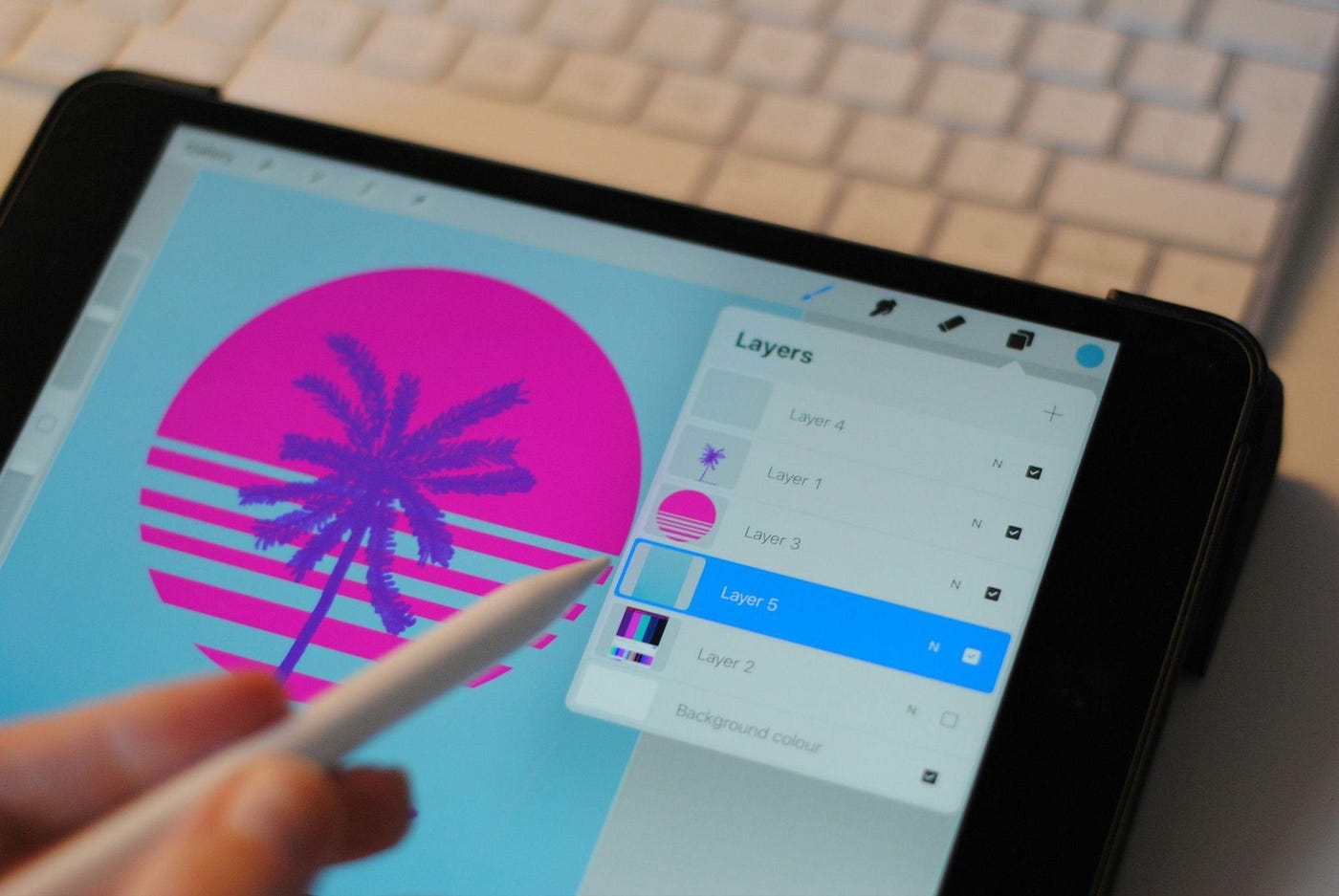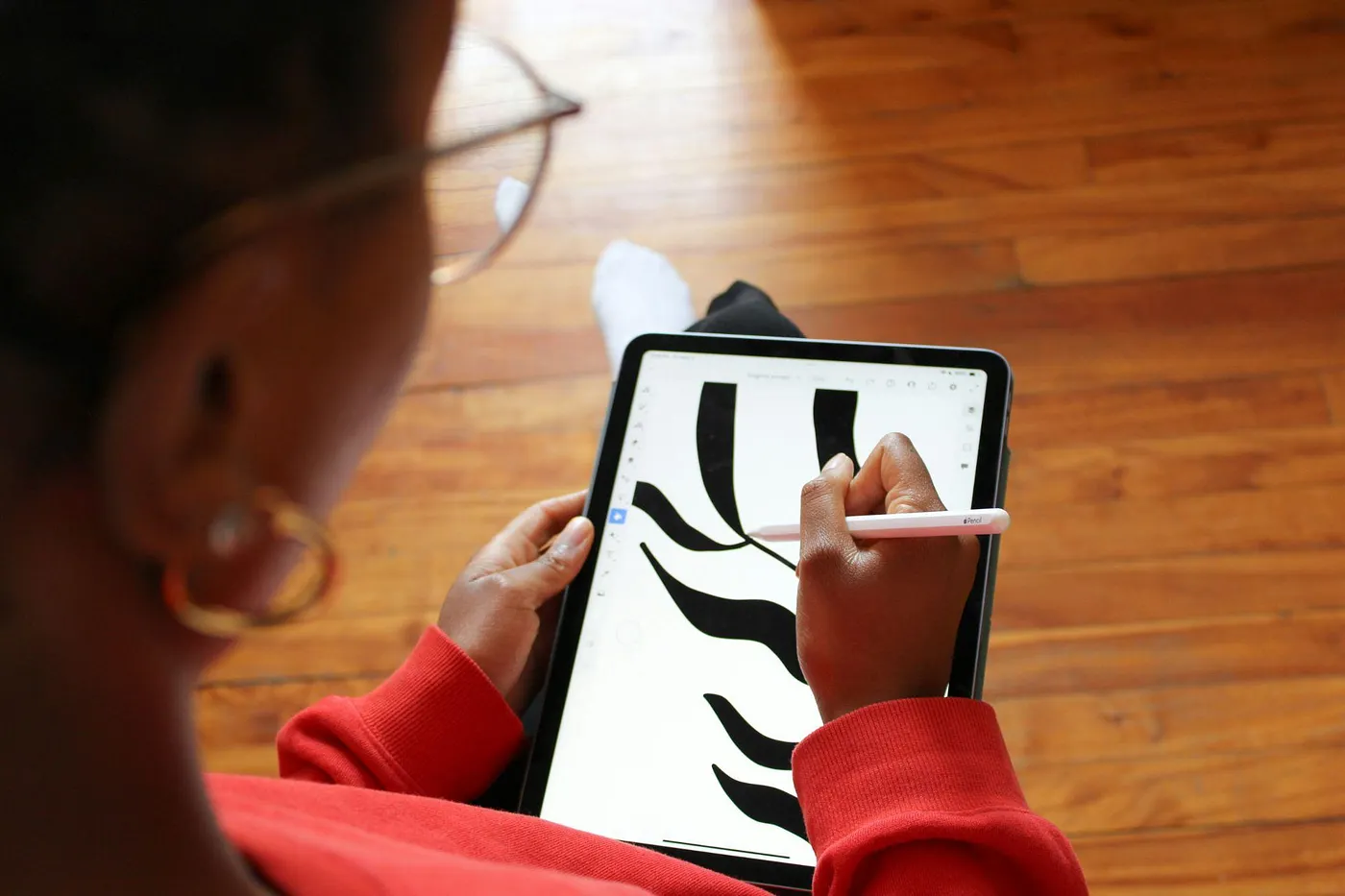What Is Digital Art?
Digital art refers to artworks that use digital technology as an essential part of the creation process, display, or both. As defined by Tate, digital art encompasses any work that is made or presented using digital technology. It includes digital paintings, 3D modeling, animations, interactive installations, and blockchain-authenticated pieces that merge creativity with innovation.
Unlike traditional art, digital art is not a reproduction of something physical—it is conceived and created in digital form. As Adobe explains, artists today use tablets, styluses, and specialized software to create works that can move, evolve, or even respond to viewer interaction. The result is a living medium that pushes the boundaries of imagination and redefines what it means to create and experience art.
A Brief History of Digital Art
Although digital art may seem like a product of the 21st century, its roots stretch back more than half a century. In the 1960s and 1970s, early computer-generated drawings began to appear, created by artists and scientists experimenting with programming and mathematics. These early explorations in algorithmic and generative art laid the foundation for the digital practices we know today, as chronicled by Wikipedia.
The 1980s and 1990s marked a turning point. As technology became more accessible, artists began integrating computers and software into their creative processes. According to FAD Magazine, exhibitions like Electric Dreams at Tate Modern reveal that long before the rise of the internet, artists were already exploring the relationship between art and technology. By the early 2000s, the digital revolution had fully reshaped the art landscape, introducing photography manipulation, digital illustration, and online art communities.
The introduction of blockchain and NFTs in the late 2010s transformed digital art yet again, allowing collectors to authenticate, buy, and sell works in entirely new ways. This evolution—from early computer graphics to AI-generated art—demonstrates that digital art is not a temporary trend but a continuous dialogue between technology and creativity.
What Forms Does Digital Art Take?
Today, digital art encompasses a wide range of practices, from digital illustration and animation to 3D rendering, interactive virtual reality, and blockchain-based NFTs. One of the most exciting developments in this field is the rise of AI-generated art. The Museum of Modern Art (MoMA) defines generative art as “art created in part or entirely by autonomous systems or computer code.” In this form of creativity, artists design algorithms that can produce endless visual outcomes, giving rise to works that evolve, surprise, and reinterpret the artist’s initial intent.
The Toledo Museum of Art expands on this idea, describing generative and algorithmic art as collaborations between human intention and machine logic. Artists working with AI train models to generate images, often combining code with aesthetic intuition. This partnership between human and algorithm has blurred traditional boundaries between author and tool, introducing a new language of visual expression.
AI-generated art has also become an important point of discussion about the future of creativity. As MoMA explores in its essays on machine learning and art, the question is no longer whether AI can make art, but how it reshapes our understanding of creativity, ownership, and the human experience.
Press enter or click to view image in full size
How Is Investing in Digital Art Different from Traditional Art?
Investing in digital art requires a different mindset from collecting traditional pieces. The fundamentals—authenticity, scarcity, and artistic merit—remain the same, but the way they are measured changes. Digital artworks often exist as NFTs, or non-fungible tokens, which act as digital certificates of authenticity. These tokens are stored on the blockchain, allowing transparent records of ownership and transaction history. As Barclays Private Bank explains, NFTs have created a new form of collecting where provenance is secured and verifiable in real time.
Unlike physical works, digital art does not require shipping, framing, or storage. Collectors can exhibit their pieces globally through digital displays, virtual galleries, or metaverse spaces. However, new considerations arise—understanding smart contracts, maintaining digital wallets, and ensuring file longevity. The BSV Blockchain Foundation notes that blockchain infrastructure helps safeguard these assets, offering long-term security for collectors and artists alike.
Ultimately, digital art investing expands accessibility and introduces a global market that operates 24/7. It allows collectors to engage directly with artists and communities, breaking down the walls of traditional gallery systems.
The Benefits of Investing in Digital Art
The appeal of digital art investment lies in its accessibility, innovation, and cultural relevance. Unlike traditional art, digital pieces can be purchased and displayed from anywhere in the world, giving collectors unprecedented flexibility. Blockchain technology ensures transparency and provenance, while the digital format minimizes logistical costs associated with storage and transport.
More importantly, digital art reflects the spirit of our time. It captures humanity’s relationship with technology, explores new modes of interaction, and preserves cultural narratives in forms that transcend physical limitations. Collectors who invest in digital art are not only supporting artists but also participating in a broader cultural and technological evolution.
As digital art markets mature, they are also becoming more stable. Major auction houses and museums have begun incorporating digital works into their collections, signaling long-term institutional interest. For collectors seeking to diversify, digital art offers a meaningful way to merge aesthetic passion with forward-looking investment strategy.
Press enter or click to view image in full size
Why Now Is the Time to Enter the Digital Art Market
The digital art movement has moved beyond novelty—it is now an integral part of contemporary art history. Platforms like SuperRare and Foundation have elevated digital creators to international recognition, while established institutions have legitimized the medium through exhibitions and acquisitions.
For those beginning their journey, RevArt’s guide on how to invest in art provides a practical foundation for understanding art as both cultural and financial value. Combining that knowledge with awareness of digital platforms helps collectors navigate this growing landscape confidently.
Investing in digital art is not only about profit but also participation. It allows collectors to engage with creativity that mirrors today’s world—fluid, dynamic, and borderless. By supporting digital artists now, you’re investing in the very future of artistic expression. In the years to come, those who understood this shift early will not only own valuable works but will have helped shape the next chapter of art itself.
